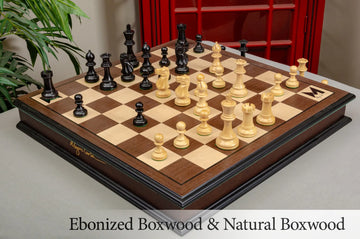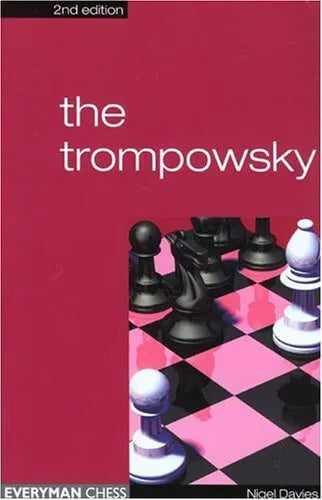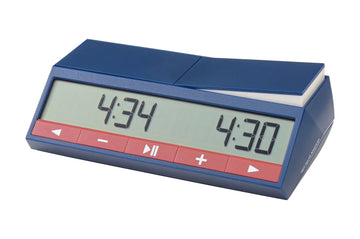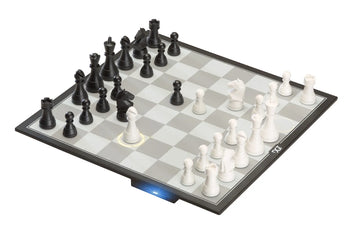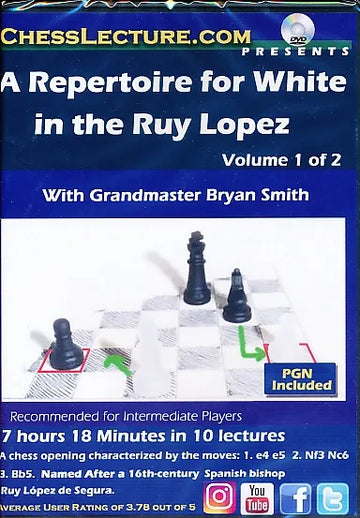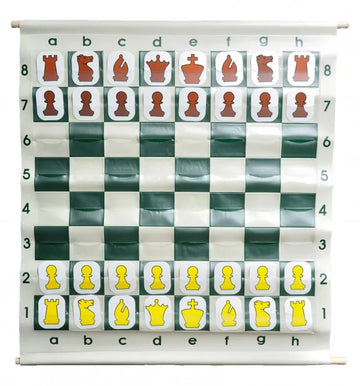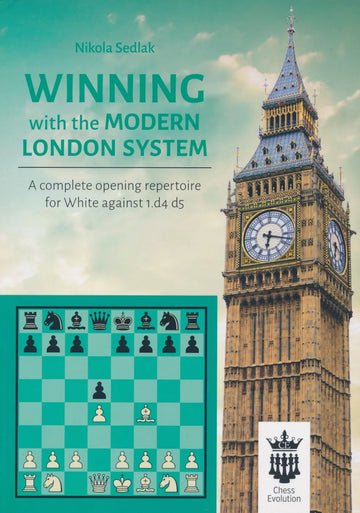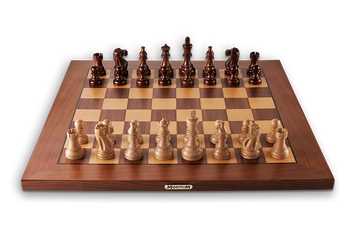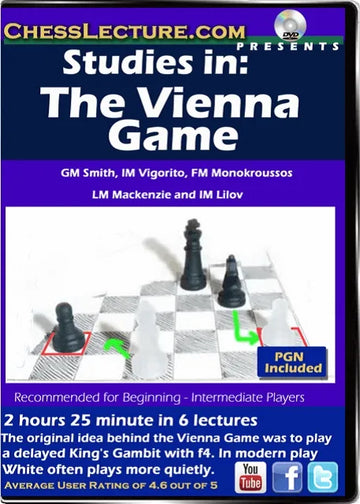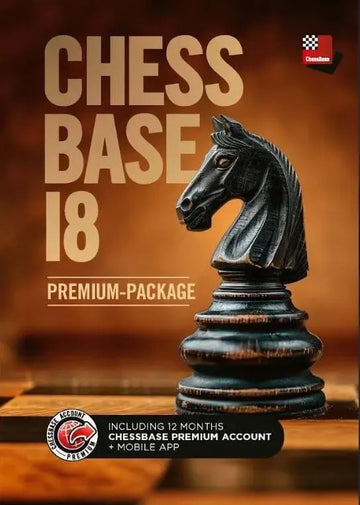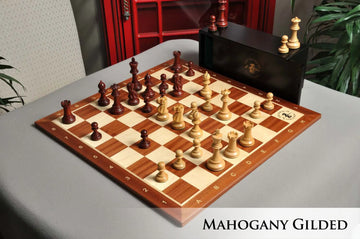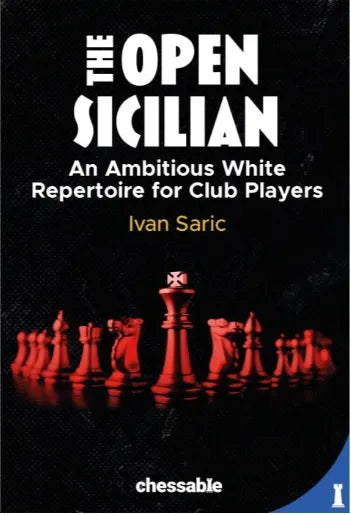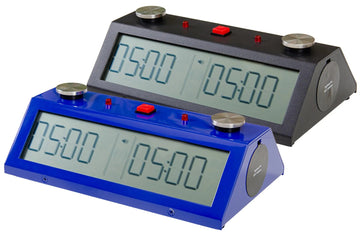The 10 Best Chess Openings For White
It is very useful to know what the best performing chess openings are. If they work well for other players, then chances are that the same openings can work well for you too! In this article we cover the 10 best chess openings for White.
In compiling this list, we have considered several factors:
- How well the opening performs at master level, statistically.
- How easy the opening is to learn.
- How difficult the opening is to play against, for your opponent with the Black pieces.
Regardless of whether you prefer to start the game with 1. e4 or 1. d4, we have come up with the strongest opening options for White against all of Black’s main replies.

The Ruy Lopez
Against the Symmetrical King’s Pawn Opening (1. e4 e5), the most common next moves are 2. Nf3 Nc6. Therefore, it is at move three where White must make an important choice regarding where to take the game next.
Three of the most popular options are:
- The Italian Game, with 3. Bc4.
- The Scotch Game, with 3. d4.
- The Three Knights Opening, with 3. Nc3.
However, the top choice at master level is the Ruy Lopez, with 3. Bb5.

The Ruy Lopez is one of the oldest and most respected chess openings, being named after a Spanish priest from the 16th century. The Ruy Lopez has remained popular ever since.

In general, Black looks to expand on the queenside, often involving the moves a6 and b5. Meanwhile, White tends to concentrate their play in the center and on the kingside.
White has many ideas in the Ruy Lopez, including:
- Using their light-squared bishop to capture Black’s knight on c6, creating an immediate imbalance. Often this capture can damage Black’s pawn structure. The loss of this knight also weakens Black’s control over the d4 and e5 squares.
- Or, more commonly, White preserves their bishop, often bringing it via a4 to either b3 or c2, in order to help create pressure against Black’s center and kingside.
The Ruy Lopez has a reputation for being a positional chess opening for White - but it can also spring to life and see White launching a devastating attack. Either way, beginning the game with the Ruy Lopez is sure to lead to rich, interesting play.
To learn more about the Ruy Lopez, check out Fabiano Caruana’s Navigating The Ruy Lopez.
The Vienna Game
Although 2. Nf3 is the most common way for White to continue against the Symmetrical King’s Pawn Opening (1. e4 e5), alternative moves have the advantage of being less common - which makes it more likely that your opponents will not be as prepared to face them.
If you are looking for something a bit more dynamic than the Ruy Lopez, then the Vienna Game (2. Nc3) is definitely worth a look.

The Vienna Game is so named because of the strong Viennese chess masters who helped develop the opening theory behind it - including Wilhelm Steinitz, Rudolf Spielmann and Savielly Tartakower.

The most unique move for White in the Vienna Game is a quick f4 pawn thrust - known as the “Vienna Gambit”. This advance is possible because White has not played Nf3, meaning that the White f-pawn is free to move.
White’s idea is to play with similar ideas as in the King’s Gambit (2. f4). But by playing 2. Nc3 first, White is a bit more developed before striking at the center with the f4 advance.
The Vienna Gambit has excellent chances of taking Black out of their comfort zone. White sacrifices a pawn, but gets tremendous initiative and tactical opportunities. If you know the opening better than your opponent, you stand a great chance of landing a quick knockout.
To learn more about this opening, check out Andrew Martin’s The Vienna Gambit.
The Open Sicilian
Next up is the Sicilian Defense (1. e4 c5). This is Black’s most popular way of meeting the King’s Pawn Opening, as well as being generally considered the most challenging for White to face. If you are going to play 1. e4, then you must be prepared for the Sicilian!
There are many so-called “Anti-Sicilians” which try to avoid Black’s sharpest lines, including:
- The Alapin Variation, with 2. c3.
- The Closed Sicilian, with 2. Nc3 and a kingside fianchetto.
- The Smith-Morra Gambit, with 2. d4, followed by 3. c3.
- The Grand Prix Attack, involving f4 and Nc3.
However, the Open Sicilian (2. Nf3) is objectively superior to all of them. Although the Anti-Sicilians sidestep a lot of opening theory, they also offer Black too many opportunities to quickly gain equality, or even gain an advantage out of the opening. This is reflected in the statistics at master level. The Open Sicilian has both the highest percentage of White wins, and lowest percentage of Black wins.

Yes, the Open Sicilian necessitates learning plenty of opening theory - but the results are definitely worth it. Remember, chess isn’t meant to be easy!

After 2. Nf3, Black has a huge range of options on their second move: they may play d6, e6, Nc6, g6, or even a6. Against almost all of them, White should play 3. d4 - which is consistent with the earlier 2. Nf3. White invites Black to capture 3. …cxd4, whereupon White will recapture 4. Nxd4. White gets their knight to a powerful central square, while Black has a central pawn majority. It is the starting point for a sharp, unbalanced battle.
If you enjoy fighting chess, then the Open Sicilian is the best chess opening for White against 1. …c5!
To learn more about the Open Sicilian, check out Ivan Saric’s The Open Sicilian: An Ambitious White Repertoire For Club Players.
The Caro-Kann, Advance Variation
The Caro-Kann (1. …c6) is another main move that all 1. e4 players must be ready for. After White plays 2. d4 to take more space in the center, Black will almost invariably thrust forward with 2. …d5. Now it is up to White to determine which variation to enter into.
Our recommendation is the Advance Variation (3. e5). The statistics show that at master level, White wins 43% of the time - which is a significantly higher percentage than with any of White’s third move alternatives.

By playing 3. e5, Black’s kingside development becomes quite cumbersome. The advanced White pawn on e5 prevents Black from developing their kingside knight to the natural f6 square.

Therefore, in order to castle kingside, Black will have to play e6, Ne7, Ng6 (or Nf5), Be7 and finally 0-0. This is all rather time-consuming, with Black’s pieces getting in the way of each other. In the meantime, White can develop seamlessly and start posing immediate problems.
If the center opens up early in the game, White will have better attacking chances. Black’s hopes rest on long-term play on the queenside - but if White plays actively, then Black may never get the opportunity!
Sam Shankland, a noted expert in the Caro-Kann with the Black pieces, once called the Advance Variation the most critical test for the opening. If even a grandmaster finds the Advance Variation tough to play against with Black, then it is all the more reason for you to play it with White!
To learn more about playing the Caro-Kann, Advance Variation with White, check out Alexey Dreev’s Attacking the Caro-Kann.
The French Defense, Classical Variation
Rounding out our coverage of the King’s Pawn Opening is the last of the “big four” defenses Black commonly plays against 1. e4: the French Defense (1. …e6).
The next moves in the French are usually 2. d4 d5. Then, it is up to White to decide which direction to take the game next.
Some of the most popular choices are:
- The Tarrasch Variation, with 3. Nd2.
- The Advance Variation, with 3. e5.
- The Exchange Variation, with 3. exd5.
However, our recommendation against the French is also White’s most-played third move: The Classical Variation, with 3. Nc3. In our view, it gives White the best chances of playing for a win. The statistics at master level bear this out too.

The Classical Variation is a highly principled way for White to play against the French setup. White develops their queenside knight to the most natural square, defending the e4 pawn, so that 3. …dxe4 can be comfortably met by 4. Nxe4 - which is known as the Rubinstein Variation.

Another way that Black can play against the Classical Variation is with 3. …Bb4, pinning the White knight. There is some opening theory to learn in this line, but it is worth understanding that Black needs to be very careful about giving up their dark-squared bishop for the White knight via …Bxc3. Black can end up weak on the dark squares, or even find themselves on the receiving end of a Greek Gift sacrifice.
To learn more about playing the French Defense, Classical Variation with White, check out Pentala Harikrishna’s Beat the French Defense with 3. Nc3.
The London System
We now move on to the best chess openings for White that begin with the Queen’s Pawn Opening (1. d4).
One of the top choices is the London System. This opening gained its name at a 1922 chess tournament held in London where players were looking for a way to reach a playable middlegame against almost anything Black plays - without needing to learn excessive amounts of opening theory.
Today, over a century later, the London System remains popular for much the same reason! Beginners love the London System because they can play the same first few moves almost without thinking. Elite grandmasters employ the London System too because it follows strong chess fundamentals. The London System is truly a chess opening for White for all levels.
The hallmark of the London System is White quickly developing their dark-squared bishop to f4. This gets the bishop out to a useful diagonal in front of White’s pawn chain before the e-pawn advances to e3. The below diagram shows an example.

Among the many strengths of the London System is how simple it is to learn. Along with Bf4, White plays natural movies such as Nf3, e3, develops their light-squared bishop to either e2 or d3, and quickly castles kingside. White also typically plays c3 to complete the normal London System central pawn structure, and Nbd2 to prepare a future e4 pawn advance.
The end result is that White’s pieces all end up on good squares, all but guaranteeing White a solid start to the game.
To learn more about the London System, check out Oscar de Prado’s The London System In 12 Practical Lessons.
The Catalan Opening
After the frequently-played opening moves 1. d4 Nf6, 2. c4 e6, White reaches an important juncture in regards to which direction the game goes next:
- 3. Nc3 invites Black to go for the Nimzo-Indian Defense, where 3. …Bb4 pins White’s queenside knight.
- 3. Nf3 will often see Black go for the Queen’s Indian Defense, with 3. …b6 and …Bb7 at some point.
However, we think the third-most played move, 3. g3, is worth considering. This is the Catalan Opening. By playing 3. g3, White intends to fianchetto their light-squared bishop with Bg2.

The success rate for White in the Catalan Opening is similar to that of the other main third moves. Whether or not to play the Catalan is more a matter of taste: if you enjoy long, strategic battles where you get the chance to outplay your opponent slowly, then the Catalan Opening is the perfect choice.

White’s bishop on g2 naturally points at the queenside - and it is on the queenside where White’s ambitions usually lie.
Both kings will generally reach safety, move-by-move memorization in the opening is not so important, and decisive tactics are unlikely to appear early in the game. It is hard for Black to spring an opening surprise in the Catalan Opening. Instead, the winner of the game will tend to be the player who possesses superior positional understanding.
To learn more about the Catalan Opening, check out Victor Bologan’s The Catalan: A Complete Repertoire For White.
The Trompowsky Attack
If you are seeking a more dynamic opening choice, then we have an alternative suggestion for how to proceed in the Queen’s Pawn Opening after Black replies 1. …Nf6.
The Trompowsky Attack (2. Bg5) may be a distant third in the popularity stakes at master level, but it also has one of the highest win rates for White. Admittedly, Black also gets a higher win rate in the Trompowsky than is the case in some of the other second moves White can play. These statistics reflect the status of the Trompowsky Attack as a provocative, combative chess opening.

With 2. Bg5, White’s bishop immediately threatens Black’s knight. This forces Black to consider the consequences of White capturing it. For starters, Bxf6 from White would damage Black’s pawn structure. It would also enable White to play a quick e4, controlling the center.

Black often meets the Trompowsky Attack with 2. …Ne4, counterattacking the White bishop, thus putting the question back to White. After just two moves, both sides are flouting the opening dictum of “do not move the same piece twice in the opening”!
Perhaps the greatest strength of the Trompowsky Attack is that Black cannot follow the same development plan as when White plays the most common second move (2. c4). This makes the Trompowsky Attack a surefire way of getting the game on to territory of White’s choosing. It immediately becomes a battle of wits and it is never dull!
To learn more about the Trompowsky Attack, check out Timur Gareyev’s video training course Trompowsky for the Attacking Player.
The King’s Indian Defense, Makagonov Variation
If you are the type of chess player who prefers to take on the challenge of engaging in a battle of opening theory against your opponent (rather than sidestep it, via some of the choices outlined earlier) then you need to be prepared to face the King’s Indian Defense. It is one of Black’s sharpest options against 1. d4, especially for the underprepared.
After the main first few moves from both sides, we recommend the Makagonov Variation (6. h3) - a little pawn push with a big idea behind it. Notice how it scores a whopping 48% win rate for White at master level against the King’s Indian Defense.

In order to understand the Makagonov Variation’s 6. h3, we must first understand Black’s typical plans in the King’s Indian Defense. The King’s Indian player is generally most comfortable when they can provoke White into closing the center, followed by playing …f5, with an assault against White’s castled king.

Rather than go along with Black’s wishes, the move 6. h3 sees White get ready to play g4, thus creating a strong clamp against Black’s intended f5 pawn break. White also keeps the position of their king flexible. The White king may stay in the center, or even castle queenside.
In the Makagonov Variation, Black does not get the style of game they want - making it one of the best chess openings for White.
To learn more about the King’s Indian Defense, Makagonov Variation, check out the co-authored book The Makagonov Variation.
The Austrian Attack
We finish this list of the best chess openings for White with our suggestion against an opening setup that Black may employ against either 1. e4 or 1. d4: the Pirc Defense - or its cousin, the Modern Defense.
Both of these setups see Black play …d6 and …g6, together with a kingside fianchetto of their dark-squared bishop. These moves can be played in many different orders.

Notice how Black has chosen to advance their pawns just one square rather than two squares. To put Black’s approach to the greatest test, White can grab the entire center with d4, e4… and the move that characterizes the Austrian Attack: f4.
By playing f4, White gets ready to push the e-pawn ahead to e5, gaining even more space against Black’s cramped position. Once e5 has been played, Black’s knight gets pushed away to a worse square. Black’s dark-squared bishop will also be unhappy on g7, given that it will face a solid chain of White pawns on d4 and e5.
The attitude to keep in mind when playing the Austrian Attack with White is to be aggressive. Black is placed under immediate pressure due to their lack of space. Your job is to keep turning up the heat until your opponent finally cracks. Keep a sharp eye out for tactics early in the game - many games in the Austrian Attack can be won quickly with a decisive blow.
To learn more about the Austrian Attack, check out Robert Ris’ Attacking Repertoire with 1. e4.

